Definition
The circulatory system, also known as the cardiovascular system, consists of the organs and fluids that transport materials like oxygen and nutrients throughout the body. All vertebrates have a closed circulatory system in which the blood plasma and cells remain within blood vessels. This is opposed to an open circulatory system in which the blood surrounds organs and tissues in an open chamber.
Overview
In birds and mammals, the primary organ of the cardiovascular system is a four-chambered heart with its associated blood vessels. In other vertebrates, the heart can have either two or three chambers. Many invertebrates have an open circulatory system where blood (also known as hemolymph) bathes the cells and organs directly. Some of these organisms – like the octopus – can have multiple hearts spread across their body. Open vs closed circulatory systems have evolved in different lineages over time.
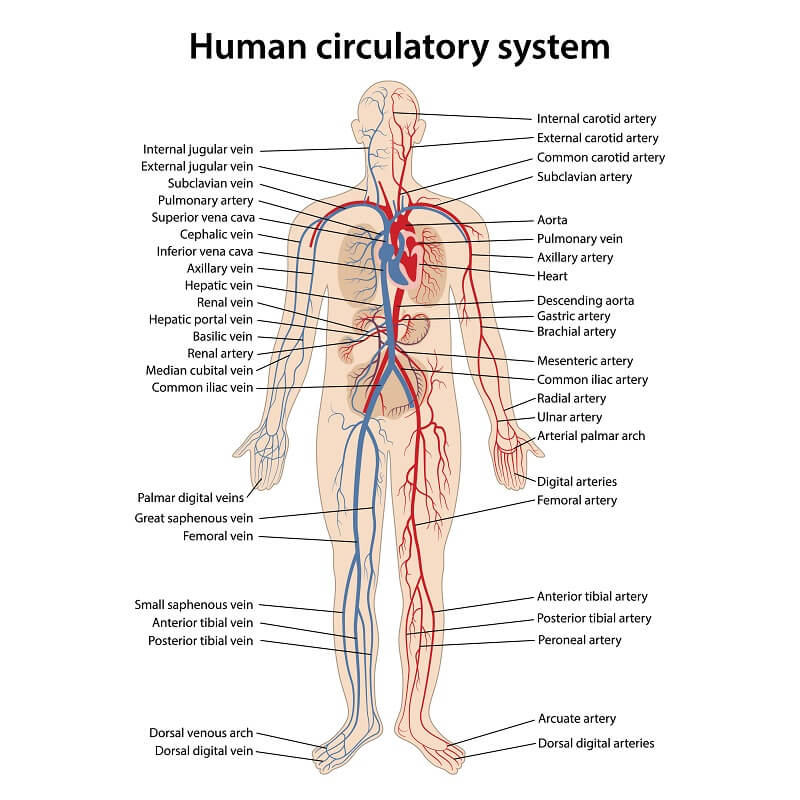
As seen in the diagram above, the circulatory system spans the entire body. As it moves blood around the system, it is both bringing oxygen to the tissues and carrying away the waste products they create. The circulatory system also has many functions related to delivering hormones, allowing the passage of immune cells, and other functions related to coordinating and maintaining a multicellular organism. Let’s take a closer look at some of these functions.
Circulatory System Function
Animal evolution has resulted in an increasing degree of specialization within tissues and organs. For instance, simple multicellular organisms like sponges have structures where every cell interacts directly with the environment. Each cell exchanges molecules with the environment, obtains nutrients from the environment, and expels its waste products directly into the outside environment. In larger and more complex animals, this is difficult since there are many cells present deep inside the organism that interact minimally with the external environment.
Therefore, each of the basic functions of an organism has to be accomplished by a specialized set of organs. For example, the digestive system is specialized for efficiently extracting useful nutrients from food. Similarly, the respiratory system deals with the exchange of gases, while the nervous and endocrine systems are involved in coordination and homeostasis. In order to sustain each of these organ systems, the body needs a circulatory system. The circulatory system allows every cell to derive sustenance, be protected from pathogens, communicate with other cells, and to exist in a relatively constant microenvironment.
Example of Circulatory System Function
The underlying function of the circulatory system is transportation. This basic function carries many different substances to and from different parts of the body.
The intricate network of blood vessels that surrounds the small intestine absorbs the end products of digestion. The pituitary gland situated deep within the brain releases hormones that influence the musculoskeletal, integumentary, and reproductive systems. These hormones are carried to their target organs and cells through the circulatory system. Within alveoli in the lungs, oxygen from the air diffuses into capillaries where it binds to the protein hemoglobin (found in red blood cells). Through this carrier protein, blood delivers oxygen to every cell within the body.
Blood also plays an important role in maintaining the pH of the body. This is particularly important since pH influences the efficiency and effectiveness of every biomolecule. Temperature regulation is also carried out by the circulatory system. When the body temperature rises, there is vasodilation in the skin, leading to heat loss. In cold temperatures, blood vessels supplying blood to the limbs constrict. This constriction preserves body heat for critical internal organs. Finally, blood and lymph contain antibodies and immune cells. This includes the cells of innate immunity present from birth as well as the adaptive immunity acquired through exposure to pathogens.
Circulatory System Parts
The circulatory system consists of the heart, blood, blood vessels, lymph, and lymphatic vessels. While the heart is the largest “organ” of the circulatory system, it is really only a large blood vessel surrounded by muscles. The arteries and veins themselves are sometimes considered together as an interconnected organ that spans through the body.
Heart
In humans, the heart has four chambers consisting of two atria and two ventricles. The atria are the receiving chambers and receive blood from veins. On the other hand, ventricles are designed to be efficient pumps, sending blood into arteries.
Oxygenated blood from the lungs arrives through the pulmonary vein to the left atrium. It passes into the left ventricle through the mitral valve during atrial systole or contraction. During ventricular systole, this blood is pumped into the aorta to be circulated in the body through arteries, arterioles, and capillaries.
The exchange of materials occurs through the single-celled endothelial walls of capillaries. Deoxygenated blood from various tissues then returns to the right atrium of the heart through two major veins – the superior and inferior vena cava. Once deoxygenated blood reaches the right ventricle through the tricuspid valve, it is pumped to the lungs during ventricular systole through the pulmonary artery. In the lungs, gas exchange occurs within the alveoli.
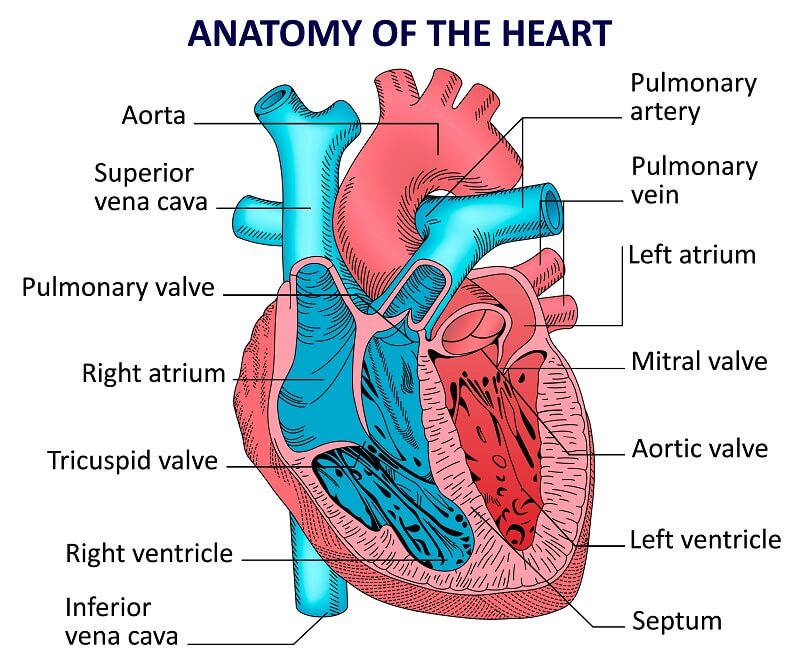
The image above shows the four chambers of the heart along with major blood vessels and valves. The circulatory system in humans can, therefore, be divided into two loops that center around the heart. The first is called the pulmonary circulation and it carries blood between the heart and the lungs. The other extensive loop is called systemic circulation and begins from the aorta and supplies oxygen and nutrients to all the tissues of the body, including the muscles of the heart itself.
Blood Vessels
There are two major types of blood vessels – those that bring blood towards the heart are called veins and those that carry blood from the heart towards other tissues and organs are called arteries. Arteries and veins undergo repeated branching to produce arterioles and venules. The thinnest blood vessels are capillaries, made of a single layer of squamous epithelial cells. These thin tubular structures are the primary site for the exchange of materials between the circulatory system and tissues.
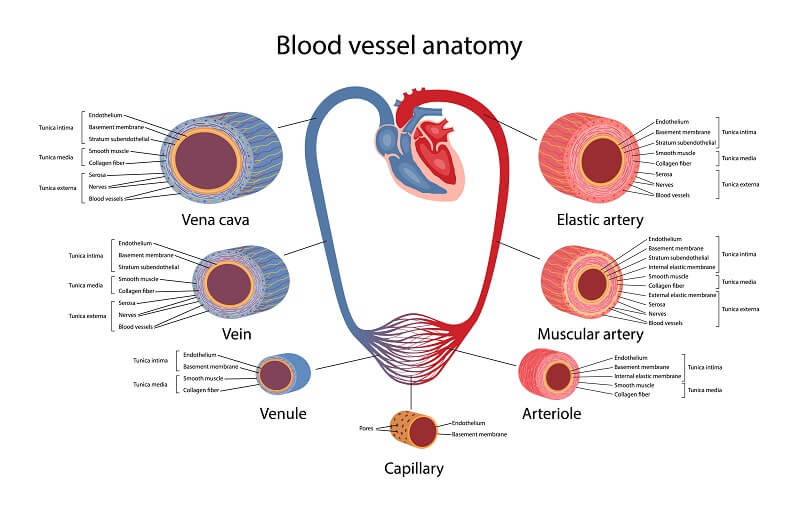
The image above shows how the arteries and veins are connected through capillaries. The blue represents deoxygenated blood, while the red represents oxygenated blood. This is a real color phenomenon seen in blood. Arterial blood is usually bright red in color because of the large amount of oxygen it carries, while venous blood is darker and more blue/purple.
The blood drawn for routine tests is often from the veins. Arteries of the systemic circulation contain oxygenated blood, while the veins bring deoxygenated blood containing high amounts of carbon dioxide towards the heart. The reverse is true for pulmonary circulation since the blood receives oxygen in the lungs, then makes its way back to the heart to be pumped out to the body.
Lymphatic Circulation
Though the Lymphatic System is sometimes considered separate from the circulatory system, their functions overlap.
Interstitial fluid is a colorless solution that bathes all the cells of the body and forms a major component of the extracellular fluid. It is formed due to the hydrostatic force of blood in capillaries which causes water, ions, and small solutes from the circulatory system to escape.
Interstitial fluid is similar to blood plasma in many ways. Some of this fluid starts to flow into the extended open-ended network of tubular structures forming the lymphatic circulation. This fluid is now called lymph and passes through lymph nodes, where pathogens, damaged cells, or cancerous cells can be trapped and destroyed. Metabolic wastes and cell remnants are then moved towards the bloodstream and processed before being expelled or excreted as body waste.
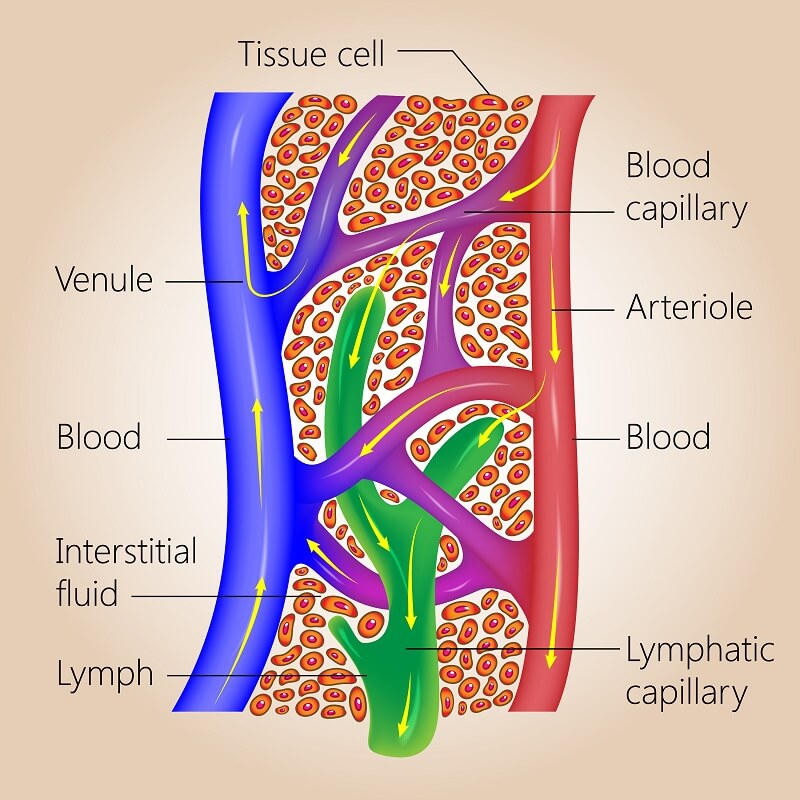
The lymph vessels weave through capillaries to absorb all of the fluid they lose and transfer it back into the circulatory system. The lymph nodes flow in one direction to carry this fluid back toward the neck, where it is dumped back into the subclavian veins. This is how the fluid reenters the circulatory system.
One of the important functions of the lymphatic system is to maintain fluid homeostasis between the liquid in blood and the fluid content of tissue fluid. A properly functioning network of lymph vessels and nodes prevents edema, contributes to immunity, and is crucial for the absorption of fats and fat-soluble vitamins.
How Does the Circulatory System Work?
The circulatory system is mainly driven by the heart. The pressure created in the heart pushes blood into the arteries. The arteries expand with the pressure, and the blood is forced all the way into the smallest capillaries. Veins are surrounded by a variety of smooth muscles, and these muscles help move blood through the lower-pressure veins and back to the heart. Other activities like large muscle movements can also help drive blood through the system. In general, it only takes a human about a minute to circulate a portion of blood through the entire system and back to the heart.
Circulatory System Structure
As a whole, the circulatory system has a general pattern, structure, and flow. Blood starts in the heart, where it is split into two patterns of circulation. The pulmonary circulation goes to the lungs and back to the heart. This circuit is used to oxygenate the lungs. Then, the blood reenters the heart and is pumped through the systemic circulation.
These veins and arteries serve the body and have a standardized setup. First, arteries carry oxygenated blood toward the tissues. As the arteries get closer to their target tissue they get smaller and smaller, eventually leading to capillaries. Capillaries are the smallest of all vessels, and they serve as the site of gas exchange in the tissues. On the other side of capillaries, the veins start. Veins carry deoxygenated blood, along with various waste products, back towards the heart. The waste products will be excreted in the lungs, or they are filtered out by the liver or kidneys.
In other animals, the circulatory system can vary widely. This article describes the closed circulatory system of humans and other mammals. Fish, on the other hand, have only a 2-chambered heart and the entire circulatory system is much simpler. Other organisms, such as insects and other invertebrates, may have an open circulatory system. This form of a circulatory system simply bathes the organs and tissues in a blood-like fluid but does not contain veins or arteries. Still, other animals like the octopus have multiple hearts to accomplish the tasks of the circulatory system.
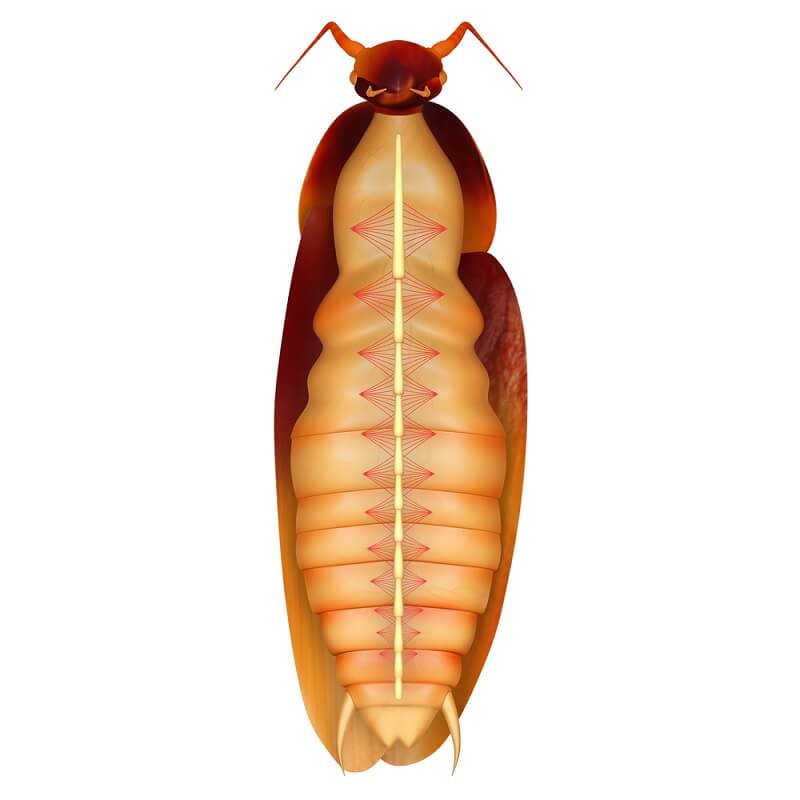
Diseases of the Circulatory System
Diseases of the circulatory system often center around an inability of any of these parts to function properly. Arteriosclerosis, for instance, is a buildup of fatty plaques on the artery walls. This increases the pressure but decreases the flow of blood. The heart must work harder to overcome these blockages. Diseases of the circulatory system often cause other conditions, like a heart attack or stroke.
The circulatory system is a vast network of tubes and acts as the lifeline for the body, transporting a number of substances from every cell and tissue towards their ultimate destination. This could be toxic substances that need to be metabolized in the liver, hormones that need to be delivered to target organs, or nutrients and oxygen required by every cell. However, the extensive nature of the circulatory system, with tubular structures of varying diameters and histology, makes it vulnerable to many different kinds of diseases. Among these, the formation of fatty plaques in blood vessels and clotting disorders that inhibit the body’s response to injury are particularly harmful.
Arteriosclerosis
Arteriosclerosis is a general term for the hardening and stiffening of arteries and arterioles. It results in an impairment of the circulatory system to supply crucial nutrients to different parts of the body since arteries must remain elastic to accommodate blood pressure. If the walls of an artery or arteriole become stiff, they can no longer adapt to the fluid pressure generated by every heartbeat, which results in an extra strain on the heart muscles.
Atherosclerosis
Among the variety of causes for arteriosclerosis, the formation of a fatty plaque that occludes the blood vessel is called atherosclerosis. It begins with an injury to the inner endothelial wall of the artery or arteriole, from pollutants, or through the presence of a large amount of low-density lipoprotein (LDL) and cholesterol. This hampers the barrier function of the endothelium and allows cholesterol and other LDLs to move towards the inner tissues of the arterial wall. The presence of these molecules in the damaged area activates the immune system, recruiting macrophages to the site of injury.

When there is a large amount of LDL in the plaque, macrophages are unable to clear the site and undergo necrosis, forming a core of dead cells within the arterial wall. This is followed by the calcification of the plaque as well as the formation of a fibrous cap around the entire structure. These events increase resistance to blood flow and reduce the diameter and elasticity of the blood vessel. Over time, these plaques could get partially disconnected from the artery wall, exposing the inner necrotic cells to blood, and result in blood clotting. They could also get dislodged completely and move towards smaller blood vessels and occlude them completely.
Atherosclerosis can lead to a number of illnesses based on the blood vessel affected. If the arteries supplying blood to the heart are affected, it can lead to angina (pain in the chest), cardiac infarction, or cardiac arrest. Atherosclerosis can result in an increase in blood pressure when the arteries of the kidney are partially or completely blocked. Complete blockage of any blood vessel supplying critical oxygen and glucose to the brain results in a stroke, with possible irremediable damage to neurons and nerve tissue. If blood vessels supplying oxygenated blood to the limbs or extremities are affected, it can lead to necrosis of tissues and potentially result in gangrene.
Quiz
